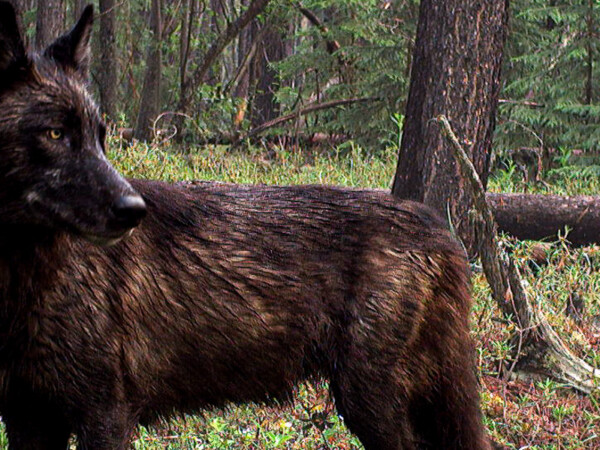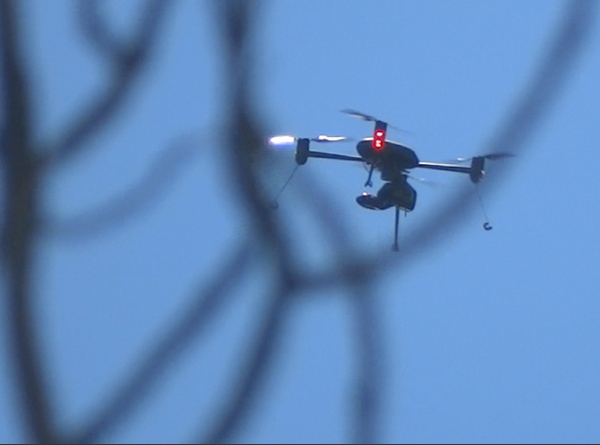Coyotes (Canis latrans), are a medium-sized predator which has developed the ability to coexist with humans quite effectively. While many other similar predator species tend to live in the outskirts and hidden areas of human development, it is not uncommon to see a bold coyote right in the center of urban activity. The social relationship coyotes have with humans is unique and interesting, but so are the interactions that coyotes have with each other, especially when it comes to coyote families and kin recognition.

Both the definition and purpose of “kin recognition” is debated by biologists. The most common definition is an animal’s ability to recognize conspecifics (members of the same species) which are genetically related to it. In practice, this can present as preferential treatment towards others identified as “kin”. However, kin selection becomes more complicated when different methods are used to determine whether a conspecific is kin. Penn and Frommen (2010), break down kin recognition strategies into three categories: contextual clues, direct familiarity, and indirect familiarity. Coyotes potentially use all three of these methods while choosing mates and associating with kin, creating a complex social system within packs and neighbouring populations.

Direct familiarity may be the type of kin recognition most easily discerned from pack structure in coyotes. Coyotes are flexible in their ability to survive with or without a pack, but when they do choose to participate in a pack, it usually follows a particular structure. Generally, direct familiarity is developed through recognizing conspecifics that an individual was raised around (Penn and Frommen, 2010). Recognizing the likelihood of relatedness within packs prevents inbreeding. In coyote packs, there is most often only one breeding pair (Bekoff and Wells, 1980). The other pack members are generally other older siblings of the young of the year, and are nonbreeding. They help to protect the pups, as well as food supplies and territory. Other dispersed siblings may reside nearby packs, as there is less of a threat posed by relatives, and they may claim a pack’s old territory if it is lost (Bekoff and Wells, 1980). The ability to recognize the individuals a pup is raised around as “family” allows for this pack structure to be effective in practice.

Contextual clues as a form of kin recognition requires no genetic recognition between conspecifics. Whether or not it can even be called “kin selection” is debated, but as the outcome of preferential treatment of those determined as “kin” still occurs, it is often accepted as method (Penn and Frommen 2010). An animal which uses context clues to determine kin follows a line of reasoning to determine those related to it. For example, a bird may use the line of reasoning “this nest is mine, therefore all young within this nest must be my kin as well”. There is no genetic identification when contextual clues are used, and contextual clues are demonstrated in coyotes through the success of cross-fostering. A study by Kitchen and Knowlton (2006) found that coyotes will raise litters of pups that have been switched with the litters of other coyote parents. Coyotes will also raise litters in which only some pups have been switched, as long as the switch happens before the pup is six weeks old.

Examples of successful cross fostering raise further questions on the abilities of coyote kin recognition, and if coyotes use indirect familiarity as a kin recognition method at all. Some mammals are able to use odour cues to determine whether they are related to another member of the same species, without ever making prior contact (Penn and Frommen, 2010). Odours can contain detectable information about phenotype, and animals with similar phenotypes are more likely to be related (Penn and Frommen, 2010). Coyotes display scent marking behaviours, so it has been proposed that their scent marking expands to kin recognition behaviours. However, a failure to determine that early fostered young were genetically different from their own pups complicates that proposal.

There are many potential factors for why coyotes are able to cross foster pups at early ages, such as mother-offspring recognition occurring at a certain age, and whether recognition occurs through phenotypic/odour recognition or through other factors (Kitchen and Knowlton, 2006). Whether or not coyotes use indirect familiarity as a method of kin recognition needs further study, understanding the other methods of kin recognition reveals reasoning behind coyote social interactions and development of young
Siblings was researched and written by Bria Griffin
References
Bekoff, M., Wells, M.C. 1980. Scientific American. 242(4): 130-151.
The Social Ecology of Coyotes on JSTOR
Kitchen, A.M., Knowlton F.F. 2006. Cross-fostering in coyotes: Evaluation of potential conservation and research tool for canids. Biological Conservation. 129(2): 221-225.
Penn, D., Frommen, J. (2010). Kin recognition: an overview of conceptual issues, mechanisms and evolutionary theory. In: Kappeler, P. (eds) Animal Behaviour: Evolution and Mechanisms. Springer, Berlin, Heidelberg. https://doi.org/10.1007/978-3-642-02624-9_3
Kin recognition: an overview of conceptual issues, mechanisms and evolutionary theory | SpringerLink





